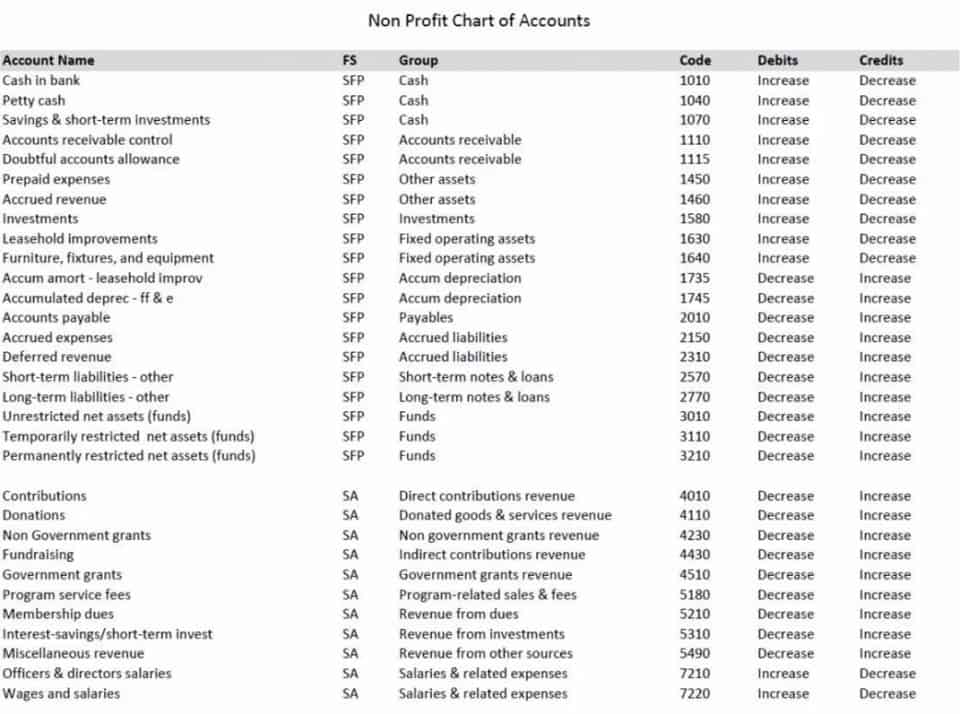
Information about how the expected cash outflow on redemption or repurchase was determined. We are not a law firm, or a substitute for an attorney or law firm. Use of our products and services are governed by ourTerms of Use andPrivacy Income Statement Policy. As a business owner, you have many options for paying yourself, but each comes with tax implications. Getting tax return and payment filing done on time is easier when you know what to expect and when they are due.
Is expense a debit or credit?
Assets and expenses have natural debit balances. This means that positive values for assets and expenses are debited and negative balances are credited. For example, upon the receipt of $1,000 cash, a journal entry would include a debit of $1,000 to the cash account in the balance sheet, because cash is increasing.
Common examples include gift revenue, gains/losses, interest income. These revenues and expenses are accounted for separately to better analyze the performance of the core business and ignore outside factors. It includes material costs, direct labour, and overhead costs , and excludes operating costs such as selling, administrative, advertising or R&D, etc. Operating Income represents what’s earned from regular business operations. In other words, it’s the profit before any non-operating income, non-operating expenses, interest, or taxes are subtracted from revenues.EBITis a term commonly used in finance and stands for Earnings Before Interest and Taxes. Though calculations involve simple additions and subtractions, the order in which the various entries appear in the statement and their relations often gets repetitive and complicated. Let’s take a deep dive into these numbers for better understanding.
Some companies will aggregate all operating expenses into one line, while others will break them into several line items. Basic EPS is the amount of income available to common shareholders divided by the weighted average number of common shares outstanding over a period. The amount of income available to common shareholders is the amount of net income remaining after preferred dividends have been paid. There is a certain amount of latitude granted to companies in how they present their expenses; thus, in order to compare them, it’s necessary to go through each company’s filed income statement and restate them in a template. Indiana University also accounts for encumbrances which are ear-marked funds set aside to cover future anticipated expenses. Encumbrance balances are not represented on the face of the income statement. Interest refers to any charges your company must pay on the debt it owes.
Income statement 1 year
Your cost of goods sold includes the direct labor, materials and overhead expenses you’ve incurred to provide your goods or services. Add up all the cost of goods sold line items on your trial balance report and list the total cost of goods sold on the income statement, directly below the revenue line item. Trial balance reports are internal documents that list the end balance of each account in the general ledger for a specific reporting period. Creating balance sheets is a crucial part of creating an income statement, as it’s how a company gathers data for their account balances. It will give you all the end balance figures you need to create an income statement. With income statement data, you can evaluate factors such as your profitability and ability to manage your expenses. Usually, investors and lenders pay close attention to the operating section of the income statement to indicate whether or not a company is generating a profit or loss for the period.
- The profit or loss is determined by taking all revenues and subtracting all expenses from both operating and non-operating activities.
- A financial document generated monthly and/or annually that reports the earnings of a company by stating all relevant revenues and expenses in order to calculate net income.
- Here are the definitions of various types of income and how they related to your small business’s taxes.
- This ratio compares the earnings before interest and taxes to interest expense, which are listed as a separate item on the income sheet.
- This equation forms the foundation of a balance sheet, with assets in one column, equal to the liabilities and the owner’s equity in the other.
- Gross Profit Gross profit is calculated by subtracting Cost of Goods Sold from Sales Revenue.
Amount of current income tax expense and deferred income tax expense pertaining to continuing operations. Like D&A, stock-based compensation is embedded within other operating expense categories, but the historical amounts can be explicitly found on the cash flow statement. Stock-based compensation is usually forecast as a percentage of revenue.
Filing financial statements
An income statement is a financial document that details the revenue and expenses of a company. Both are the same since both provide figures of a company’s profit or loss in a given accounting period. Accounting PolicyAccounting policies refer to the framework or procedure followed by the management for bookkeeping and preparation of the financial statements. It involves accounting methods and practices determined at the corporate level. Assets are generally listed based on how quickly they will be converted into cash. Current assets are things a company expects to convert to cash within one year. Most companies expect to sell their inventory for cash within one year.
Often shortened to “COGS,” this is how much it cost to produce all of the goods or services you sold to your customers. If the company is a service business, this line item can also be called Cost of Sales. Balance sheets are snapshot summaries of a company’s assets, debts, and equities. Next, analyze the trend in the available historical data to create drivers and assumptions for future forecasting. For example, analyze the trend in sales to forecast sales growth, analyzing the COGS as a percentage of sales to forecast future COGS. Learn to analyze an income statement in CFI’s Financial Analysis Fundamentals Course. Here’s the income statement for the first quarter of this year for a new local football association.

Gross profit is the amount of income left over after subtracting COGS but before subtracting operating expenses. Subtract your COGS from the revenue figure and enter the result as your gross profit. Add up all the cost of goods sold line items on your trial balance and enter the total into the cost of goods sold line on your income statement directly under the revenue line. If you don’t have a background in accounting or finance, these terms may seem daunting at first, but reading and analyzing financial statements remains a requisite skill for business owners and executives.
Next, you’ll need to calculate your business’s total sales revenue for the reporting period. Your revenue includes all the money earned for your services during the reporting period, even if you haven’t yet received all the payments.
Deloitte comment letter on IASB’s proposed amendments to IAS 1 regarding the classification of debt with covenants
Download our FREE whitepaper on financial statements to dive into P&L statements, balance sheets, and cash flow statements. See examples, find out why you need financial statements, and so much more. The purpose of income statements is to show the profitability of your business. Use the P&L to see whether you have a net income (yay!) or loss for the time period on the last line of your income statement. An income statement is a report of your business’s profits and losses over a specific period.

Form your business with LegalZoom to access LegalZoom Tax services. #WTFact Videos In #WTFact Britannica shares some of the most bizarre facts we can find. Want to dig a little deeper to understand how to read each of these reports? Check out our blog post, A Complete Guide to Reading Financial Statements. Losses covering a loss from the sale of an asset below the original cost price.
Operating Revenue
For which the entity does not have the right at the end of the reporting period to defer settlement beyond 12 months. Are you a new small business owner looking to understand your tax return a little more? Here are the definitions of various types of income and how they related to your small business’s taxes. Cost of goods includes all the costs related to the sale of products in inventory. This equation forms the foundation of a balance sheet, with assets in one column, equal to the liabilities and the owner’s equity in the other. Below is the 2021 quarterly income statement from Ford’s Form 10-Q. One of the first things that you will notice is that the report is using horizontal analysis.
Sales & Services Revenue– Revenue that is outside Indiana University’s general mission. Examples of auxiliary revenue at IU include ticket sales revenue, parking permit payments and catering services. Before you can use the information on your income statement, you need to know how to prepare it. COGS include the cost of producing your goods or performing services (e.g., raw materials and direct labor expenses). COGS only involves direct expenses like raw materials, labor and shipping costs.
Calculate Cost of Goods Sold (COGS)
The balance sheet and income statement complement each other in providing a complete picture of a company’s financial position and future prospects. Both are crucial for decision-makers, investors and financial institutions. By comparing with income statements from previous accounting periods a banker or investor will also see how a business is growing or declining.
Amount of income for proportionate share of equity method investee’s income . Amount of litigation expense, including but not limited to legal, forensic, accounting, and investigative fees. Decimal places are consistent (two for per-share data, none in Apple’s case for operating results). To achieve the core principle, the standard describes the application of five steps in recognizing revenue. The standard also specifies the treatment of some related contract costs and disclosure requirements. Interest expense – interest payments made on existing debt such us lines of credit, loans, etc.

The second part of a cash flow statement shows the cash flow from all investing activities, which generally include purchases or sales of long-term assets, such as property, plant and equipment, as well as investment securities. If a company buys a piece of machinery, the cash flow statement would reflect this activity as a cash outflow from investing activities because it used cash. If the company decided to sell off some investments from an investment portfolio, the proceeds from the sales would show up as a cash inflow from investing activities because it provided cash. As noted above, all this is based on a template designed to normalize different companies’ income statements for side-by-side comparison.
EFRAG endorsement status report 1 February 2022
Return on assets can also be calculated by multiplying net profit margin and asset turnover. The asset turnover ratio calculates the amount of revenue for every dollar of assets owned by the company. Depreciation reflects the decrease in value of capital assets used to generate income. It’s also used as the basis for a tax deduction and an indicator of the flow of money into new capital. Total expenses are the sum of cost of goods and operating expenses. It is important to note all of the differences between the income and balance statements so that a company can know what to look for in each.
What are the 4 principles of GAAP?
Four Constraints
The four basic constraints associated with GAAP include objectivity, materiality, consistency and prudence.
It shows you how much money flowed into and out of your business over a certain period of time. If your business owes someone money, it probably has to make monthly interest payments.
Supplies can range from janitorial items to desk supplies, light bulbs, and uniforms. These expenses are unrelated to the entity’s mission as they do not have a direct impact on the goods or services IU provides to its customers. An organization’s revenue streams are listed first on the income statement and typically recorded as credit balances. Revenues are recognized on the income statement in the period they are earned, or when the good/service has been provided/performed for the customer. See the Accounting Fundamentals section and Revenue Recognition section for further guidance on revenue recognition and proper recording of revenue balances. Unlike net profit (the bottom line of the P&L), gross profit shows you your company’s profit before subtracting expenses.
Interest expense
Conversely, if costs are rising this can also be seen on the https://www.bookstime.com/ and may lead an investor to ask more questions about the long term profitability of the company. Investors and financial analysts also use the income statement to derive popular financial ratios like Earnings Per Share . Figure out the net income from operations by deducting all operating expenses from gross margin. Accounting PeriodAccounting Period refers to the period in which all financial transactions are recorded and financial statements are prepared.
This statement is a great place to begin a financial model, as it requires the least amount of information from the balance sheet and cash flow statement. Thus, in terms of information, the income statement is a predecessor to the other two core statements. The statement is divided into time periods that logically follow the company’s operations. The most common periodic division is monthly , although certain companies may use a thirteen-period cycle. These periodic statements are aggregated into total values for quarterly and annual results.
The income statement presents information on the financial results of a company’s business activities over a period of time. The income statement communicates how much revenue the company generated during a period and what costs it incurred in connection with generating that revenue. The basic equation underlying the income statement, ignoring gains and losses, is Revenue minus Expenses equals Net income.
Earnings Per Share or EPS
Deloitte refers to one or more of Deloitte Touche Tohmatsu Limited (“DTTL”), its global network of member firms and their related entities. DTTL (also referred to as “Deloitte Global”) and each of its member firms are legally separate and independent entities. Whether, in substance, particular sales of goods are financing arrangements and therefore do not give rise to revenue. IAS 1 was reissued in September 2007 and applies to annual periods beginning on or after 1 January 2009. You may have noticed that independent contractor payments are now reported on the tax form 1099-NEC rather than the 1099-MISC. Here’s everything you need to know about this new informational IRS form. The statements and opinions are the expression of the author, not LegalZoom, and have not been evaluated by LegalZoom for accuracy, completeness, or changes in the law.
- Calculating the return on assets tells you how well a company uses its assets to generate income.
- To create an income statement for your business, you’ll need to print out a standard trial balance report.
- Unlike the income statement, it does not provide information on how much money the company has made or lost, it only provides the amount of debt, cash and other assets that the company owns at that point in time.
- Another option is for a business to present a different line item for each revenue source, such as one line for goods sold and another line for services sold.
- Your bookkeeping team imports bank statements, categorizes transactions, and prepares financial statements every month.
- An income statement provides valuable insights into various aspects of a business.
Most businesses have some expenses related to selling goods and/or services. Marketing, advertising, and promotion expenses are often grouped together as they are similar expenses, all related to selling. Cash Flow From Operating Activities indicates the amount of cash a company generates from its ongoing, regular business activities. Investopedia requires writers to use primary sources to support their work. These include white papers, government data, original reporting, and interviews with industry experts. We also reference original research from other reputable publishers where appropriate.
When you analyze both an income statement and a balance sheet side-by-side, you can calculate several additional financial ratios. It’s calculated by subtracting cost of goods sold from sales revenue. Here’s how you can use gross profit, and the gross profit margin, to measure your business’s production efficiency. Your trial balance may include one or more revenue or sales accounts. Add up all the revenue line items on the trial balance and enter the total on the revenue line item of your income statement.






